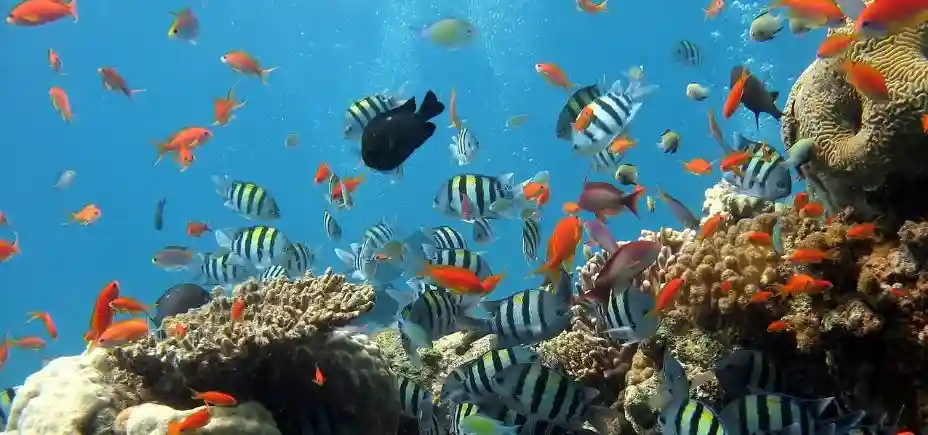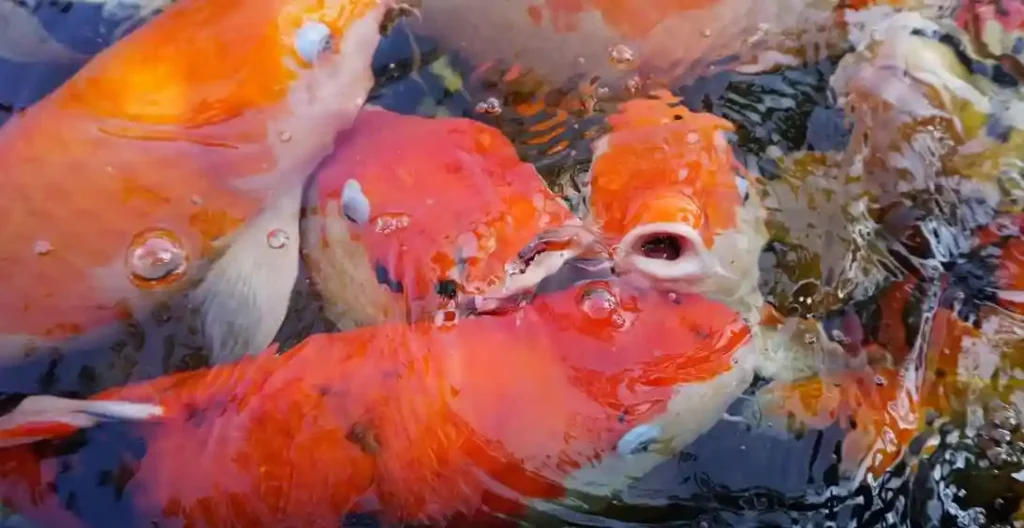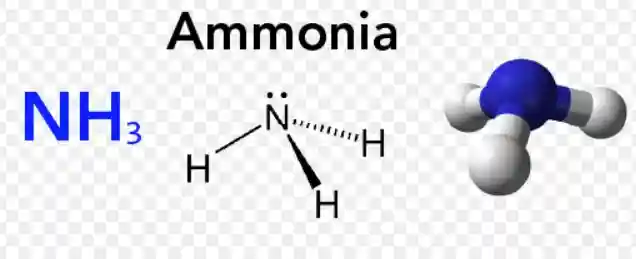Ammonia is a toxic substance that can be harmful to fish and other aquatic creatures. It is produced by the breakdown of organic matter in the aquarium, such as fish waste, uneaten food, and decaying plants. Regular water changes are essential to maintain a healthy environment for your fish. However, sometimes ammonia levels remain high even after a water change. In this article, we will discuss the reasons behind ammonia spikes after water changes and how to reduce ammonia levels in aquariums.
Why does ammonia spike after a water change?

There are several reasons why ammonia levels may remain high after a water change. Some of the common reasons are:
- Insufficient cycling: Cycling your tank is essential to establish a colony of beneficial bacteria that convert ammonia into nitrites and nitrites into nitrates. If your tank is not adequately cycled, the bacteria that would typically combat ammonia may be absent, leading to high ammonia levels.
- Deep cleaning: Deep cleaning your aquarium can remove beneficial bacteria that help reduce ammonia levels.
- Malfunctioning filters: Filters are essential to remove waste and debris from the aquarium. If your filter is not working correctly, it may not remove ammonia effectively.
- Overfeeding: Overfeeding your fish can lead to an excess of uneaten food, which can break down and produce ammonia.
- Overstocking: Overstocking your aquarium can lead to an excess of fish waste, which can produce ammonia.
How to reduce ammonia levels in aquariums?

Here are some ways to reduce ammonia levels in aquariums:
- Partial water change: A partial water change can help dilute the ammonia in your aquarium. You should change 30% to 50% of the water in your aquarium every week.
- Cycle your tank: Cycling your tank is essential to establish a colony of beneficial bacteria that convert ammonia into nitrites and nitrites into nitrates. You can cycle your tank by adding ammonia to it or by introducing one or two fish.
- Improve filtration: Filters are essential to remove waste and debris from the aquarium. You can improve filtration by adding another filter, unclogging the filter, removing unnecessary impurities, vacuuming your substrate, or lowering the pH of the water.
- Increase aeration: Increasing aeration in your aquarium can help increase oxygen levels, which can help reduce ammonia levels.
- Add beneficial bacteria: You can add beneficial bacteria to your aquarium by using a bacteria starter culture or by adding filter media or substrate from a well-established tank.
- Use neutralizing drops: You can use neutralizing drops to neutralize ammonia in your aquarium.
Can high ammonia levels cause fish death?

Yes, high levels of ammonia can be fatal to fish. Ammonia is a toxic substance that can burn the gills, skin, and fins of fish, leading to internal and external hemorrhaging.
Symptoms of ammonia poisoning include gasping for breath, loss of appetite, lethargy, red or purple gills, bloody patches on the body, and lying at the bottom of the tank. Even small amounts of ammonia can cause gill damage in fish, and extremely high levels are often fatal. Therefore, it is essential to monitor water quality and take immediate action as soon as ammonia is detected.

To reduce ammonia levels in your aquarium, you can perform a partial water change, cycle your tank, improve filtration, increase aeration, add beneficial bacteria, or use neutralizing drops. Regular water changes, proper cycling, and adequate filtration are essential to maintain a healthy environment for your fish. If you notice high ammonia levels in your aquarium, you should take immediate steps to reduce them.
What are some other signs of ammonia poisoning in fish?

In addition to the symptoms mentioned earlier, other signs of ammonia poisoning in fish include:
- Rapid gill movements
- Gills turn a dark red/purple color
- Scraping against objects
- Problems swimming
- Redness on the skin, fins, or gills
If you notice any of these signs in your fish, it’s important to take action immediately. High levels of ammonia can be fatal to fish, and even small amounts of ammonia can cause gill damage in fish. Therefore, it is essential to monitor water quality and take immediate action as soon as ammonia is detected.
To reduce ammonia levels in aquarium, you can perform a partial water change, cycle your tank, improve filtration, increase aeration, add beneficial bacteria, or use neutralizing drops. Regular water changes, proper cycling, and adequate filtration are essential to maintain a healthy environment for your fish. If you notice high ammonia levels in your aquarium, you should take immediate steps to reduce them.
Will live plants in an aquarium reduce the nitrates and ammonia levels?

Yes, live plants in an aquarium can help reduce the levels of nitrates and ammonia. Living plants take up nitrates from the water and give off oxygen during photosynthesis, which helps keep the environment safe and healthy for your fish. Some of the best aquarium plants to reduce nitrates include Marimo Moss Ball, Amazon Frogbit, Hornwort, Dwarf Hairgrass, and Water Wisteria. However, it’s important to note that plants alone may not be sufficient to reduce high levels of ammonia in your aquarium. You should also perform regular water changes, cycle your tank, improve filtration, increase aeration, add beneficial bacteria, or use neutralizing drops to keep your fish healthy and happy.
Conclusion
Ammonia spikes after a water change can be harmful to your fish and other aquatic creatures. Regular water changes, proper cycling, and adequate filtration are essential to maintain a healthy environment for your fish. If you notice high ammonia levels in your aquarium, you should take immediate steps to reduce them. By following the steps outlined in this article, you can reduce ammonia levels in your aquarium and keep your fish healthy and happy.
Frequently Asked Questions (FAQs)
How do I reduce the ammonia in my fish tank?
Here are some ways to reduce ammonia levels in your aquarium:
Perform a partial water change
Cycle your tank
Improve filtration
Increase aeration
Add beneficial bacteria
Use neutralizing dropsWhat to do if ammonia levels are high in an aquarium?
If you notice high ammonia levels in your aquarium, you should take immediate steps to reduce them. Here are some ways to reduce ammonia levels in your aquarium:
Perform a partial water change
Cycle your tank
Improve filtration
Increase aeration
Add beneficial bacteria
Use neutralizing dropsHow do you flush ammonia out of your body?
Ammonia is a toxic substance that is produced by the breakdown of protein in the body. The liver converts ammonia into urea, which is then excreted in the urine. If you have high levels of ammonia in your body, it may be a sign of liver disease or other medical conditions. You should consult a doctor if you have concerns about your ammonia levels.
What breaks down ammonia in the fish tank?
Beneficial bacteria are responsible for breaking down ammonia in the fish tank. These bacteria convert ammonia into nitrites and nitrites into nitrates, which are less harmful to fish. You can establish a colony of beneficial bacteria in your tank by cycling it, adding filter media or substrate from a well-established tank, or using a bacteria starter culture.
What causes high ammonia in a fish tank?
High ammonia levels in a fish tank can be caused by a lack of beneficial bacteria, organic die-off, overfeeding, overcrowding, poor tank maintenance, and tap water that introduces ammonia into the tank.
How do you remove ammonia from water naturally?
Clinoptilolite, a mineral, can absorb ammonia from water naturally. However, it is difficult to remove all ammonia from water without special equipment. In general, water is safe for consumption and use so long as there is less than 0.5 mg/1 ppm (parts per million) of ammonia in it.
What is the fastest way to neutralize ammonia?
The fastest way to neutralize ammonia depends on the context. For example, to neutralize ammonia in pet urine, you can mix equal parts white vinegar and water and apply the mixture to the stained area. To neutralize ammonia in the air, you can use a household cleaning product that contains a base, such as baking soda.
How soon should I test for ammonia after the water change?
It is recommended to wait at least 24 hours after a water change to test for ammonia levels in your aquarium. This will give the water time to circulate and stabilize, allowing you to get an accurate reading of the ammonia levels. If you test too soon after a water change, you may get a false reading that does not reflect the actual ammonia levels in your aquarium.







Leave a Comment
You must be logged in to post a comment.